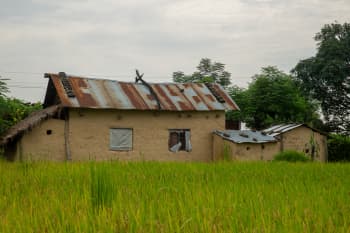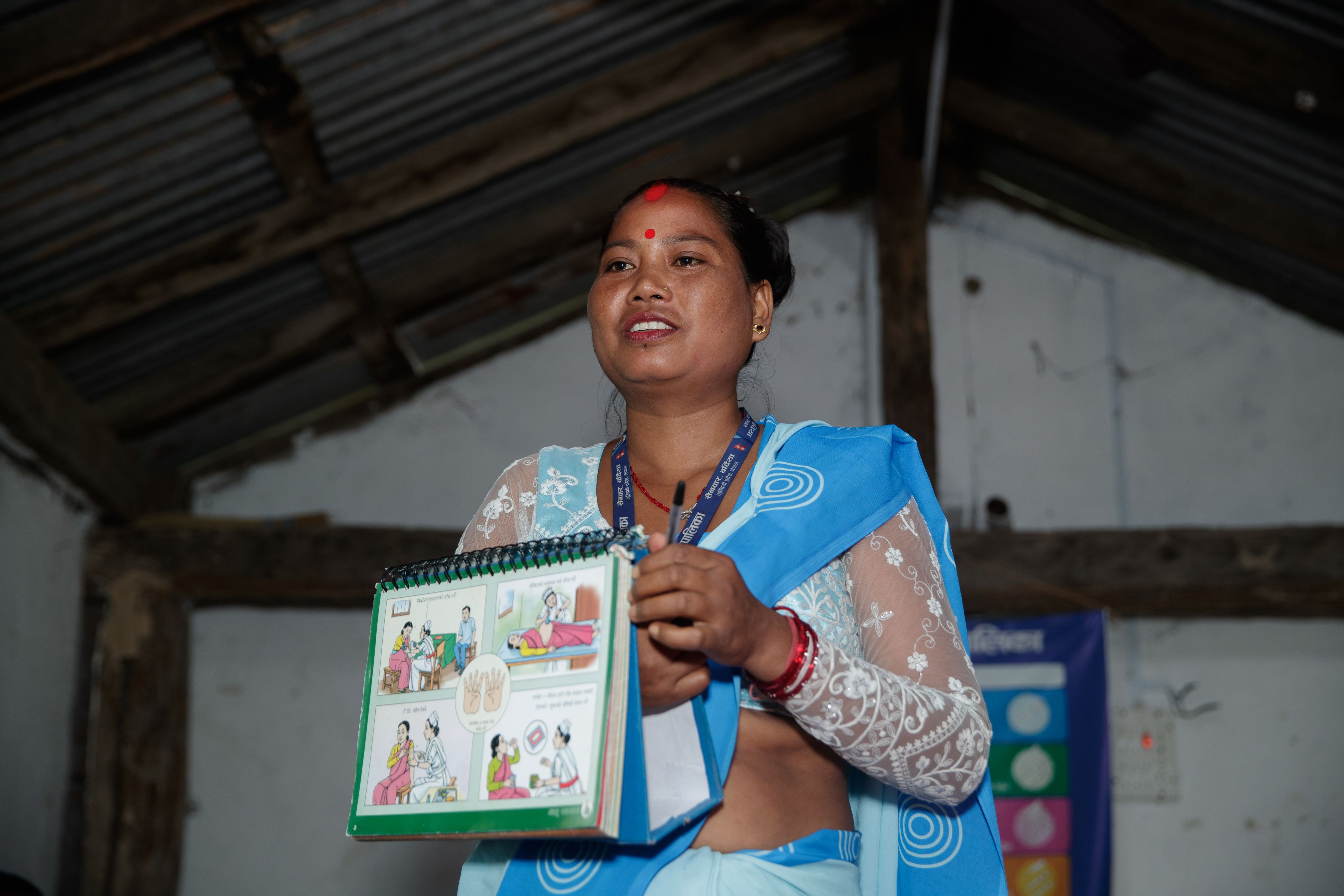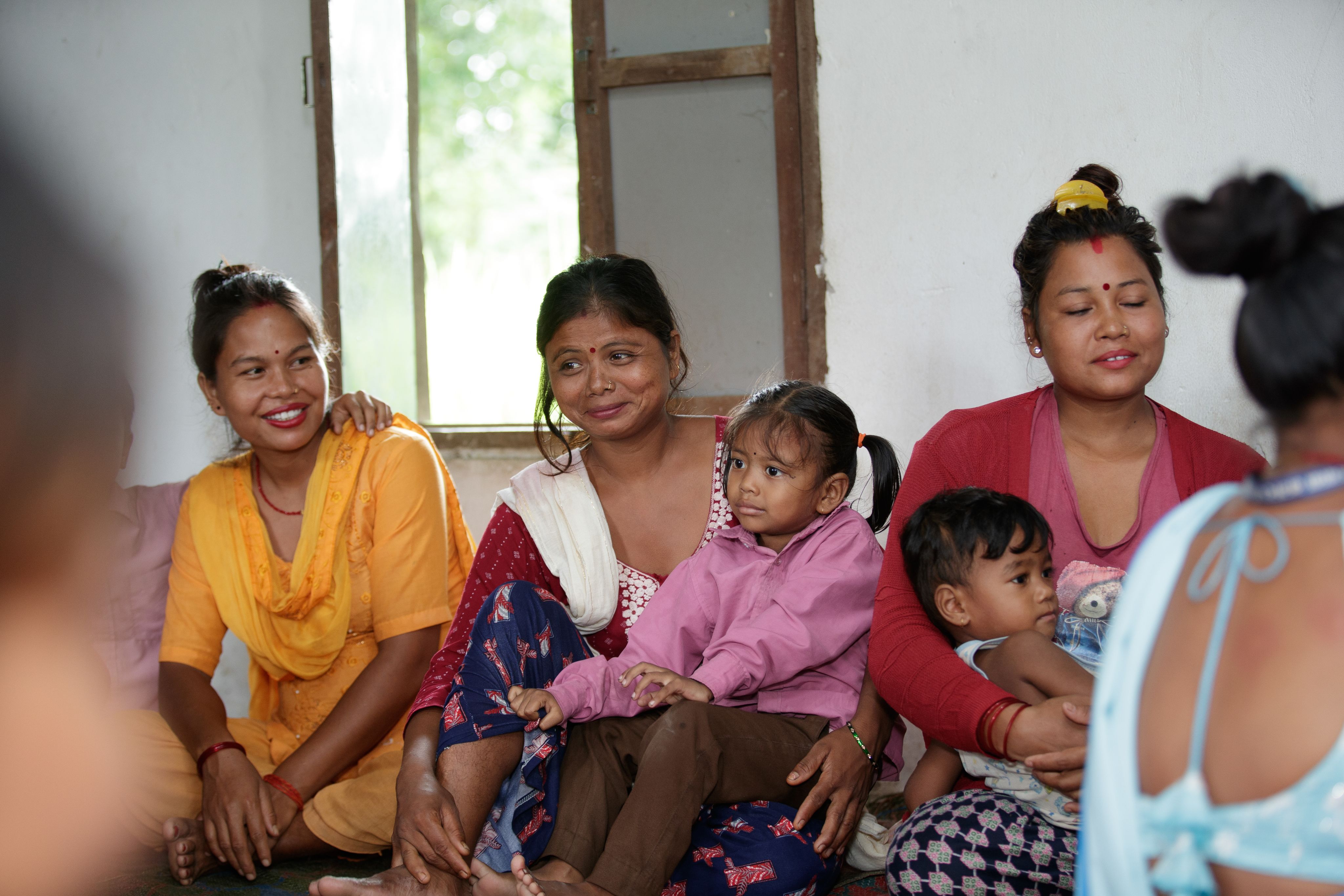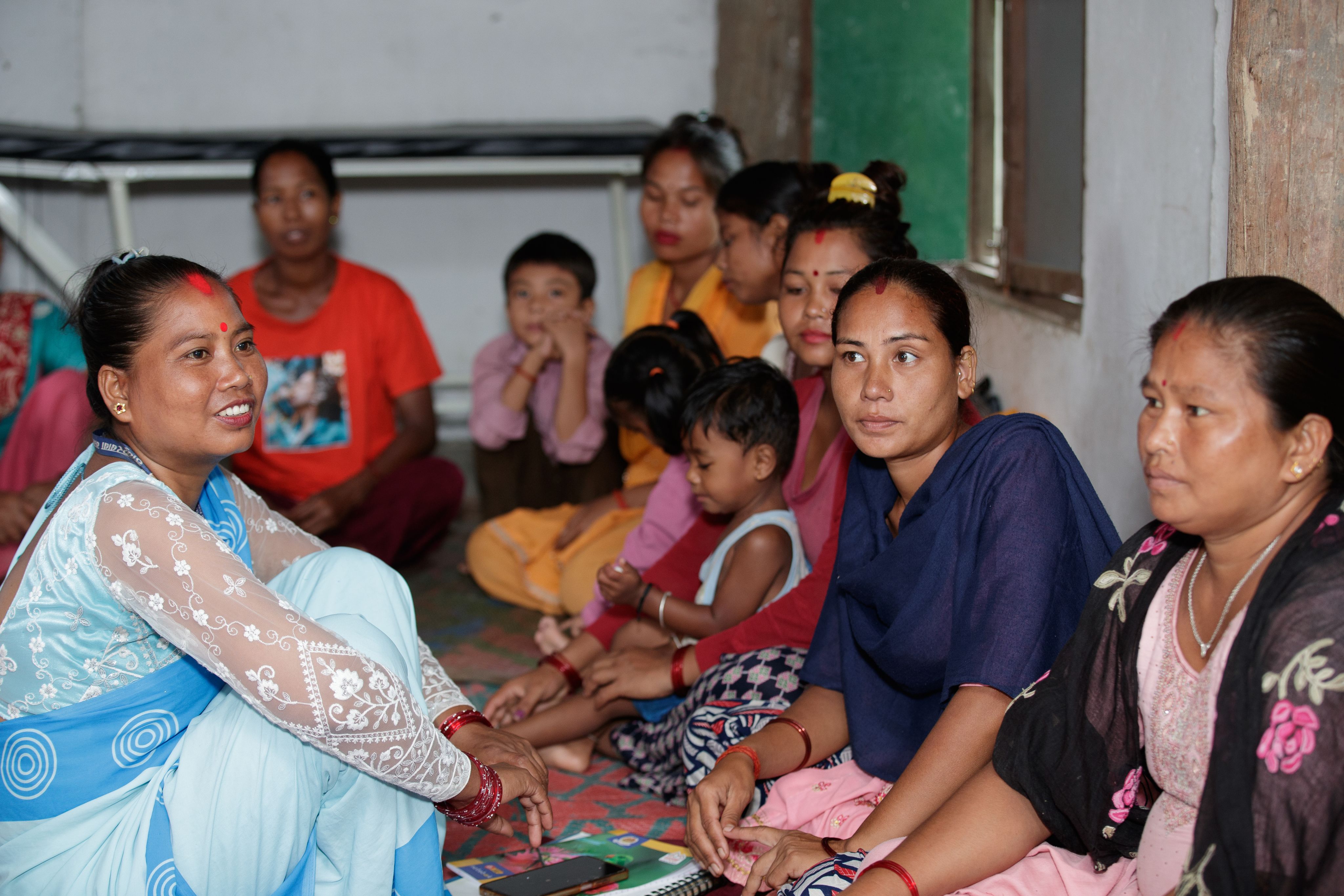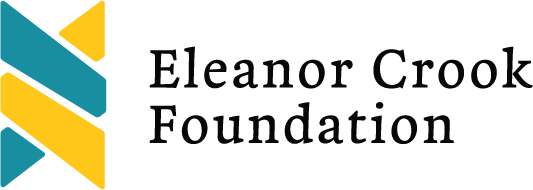The path to healthier pregnancies in the plains of Nepal
In Nepal’s lowland Terai region, women can face malnutrition during pregnancy — with potentially serious consequences. A government-led effort is exploring the benefits of prenatal multivitamins.
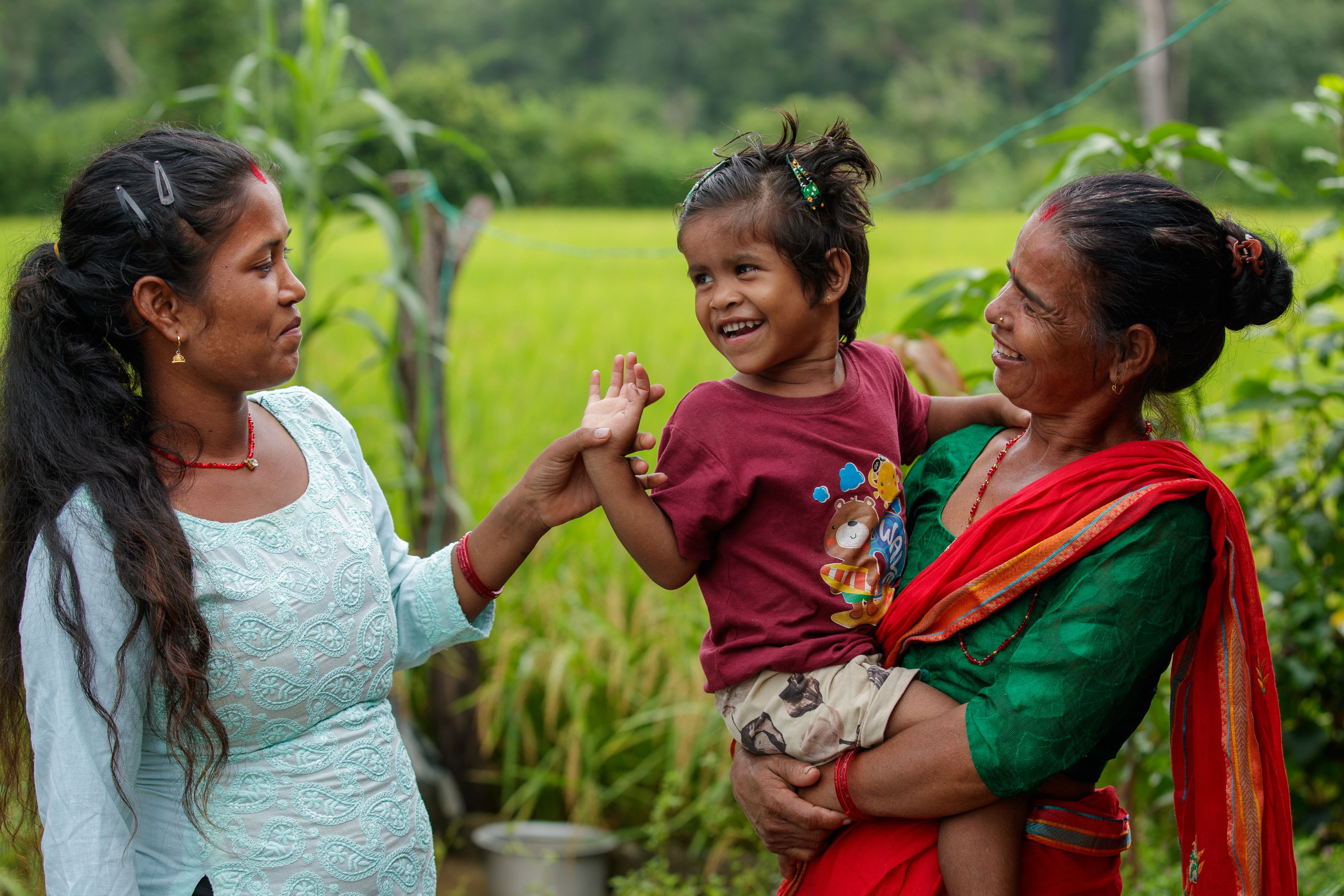
Tucked down a narrow dirt road lined with dense, green rice paddies is the small village of Mathhilo Kareli. Located just 20 km from the Indian border, it lies in the south of Lumbini province in the Terai, Nepal’s lowland region. It’s a humid morning at the tail end of monsoon season and 22-year-old Sheela Rokaya is busy preparing a meal of fried rice with tea at home for her parents-in-law and her 4-year-old daughter Deewansi.
Rokaya, who is five months pregnant, appears relaxed and at ease as she cooks. So far, she’s been feeling good, she says, with a healthy appetite and frequent cravings for momos — Nepali dumplings — and chow mein. She usually eats a typical Nepali dish of rice, spiced lentil soup, and vegetable curry for her main meals. Every day, she takes calcium and prenatal vitamins — the first time she has taken such a supplement — which have been given to her by her antenatal care provider. Her first pregnancy, however, was very different.
Orphaned at a young age, Rokaya met her Nepali husband in her home city of Mumbai in southern India. She found out she was pregnant with her first child at the age of 18. Her husband worked long hours as a chef in a hotel and often returned home after midnight. “I did not have much to eat and there was no one to take care of me,” Rokaya shared. On the day of her daughter’s birth, a neighbor helped her get to the hospital. When Deewansi was born, she was underweight and fragile. “She was too little,” Rokaya said, cupping her hands to show how small Deewansi was. “But when I took her in my hands, I was very happy.”
Soon after, Rokaya moved to Nepal to live with her parents-in-law, while her husband stayed in Mumbai for work. Her in-laws do their best to ensure she receives a varied diet with what they can grow as subsistence farmers and it is an improvement from what she was able to eat while in Mumbai. But for some women in Nepal, as in other low- and middle-income countries, maternal undernutrition is a significant issue.
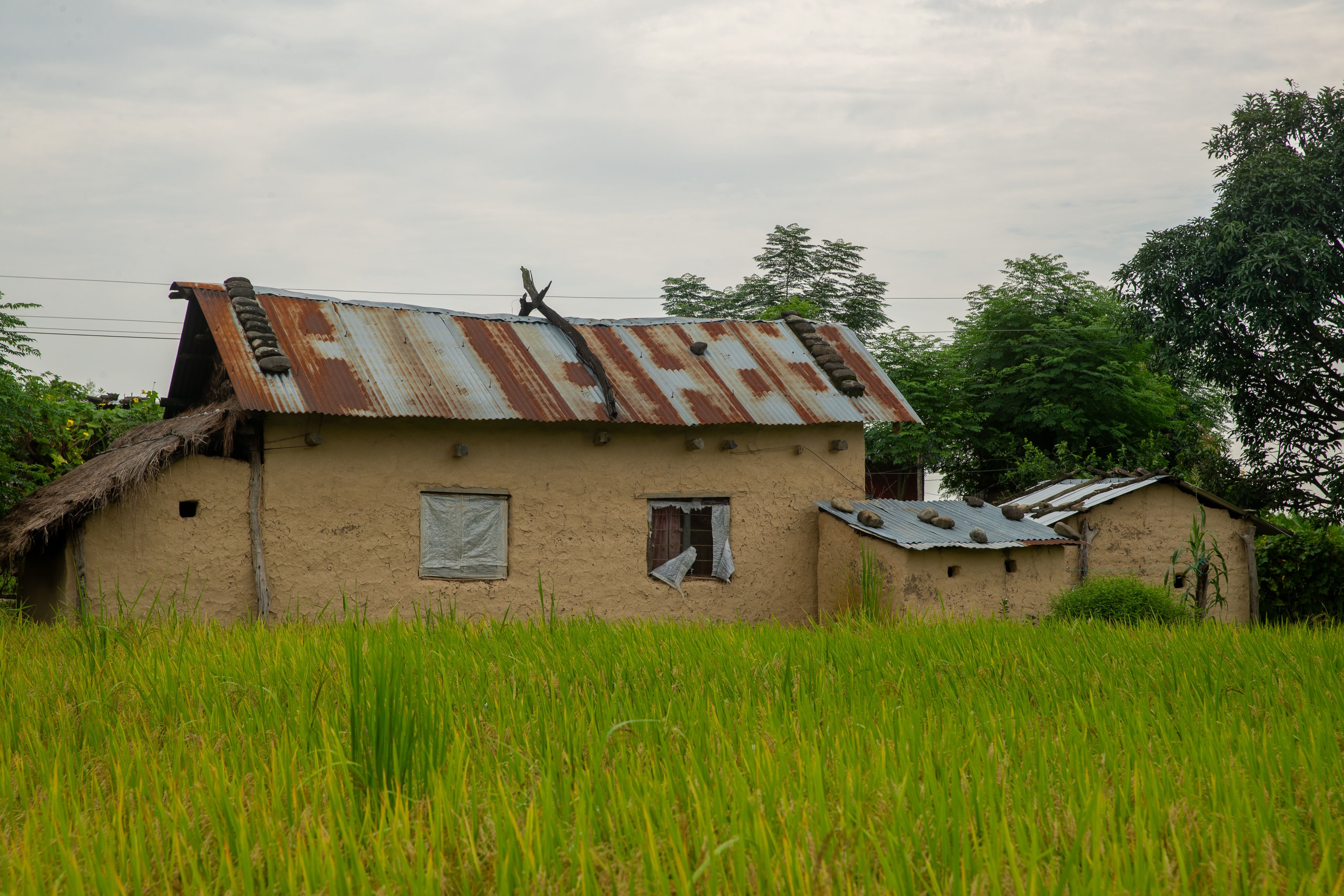
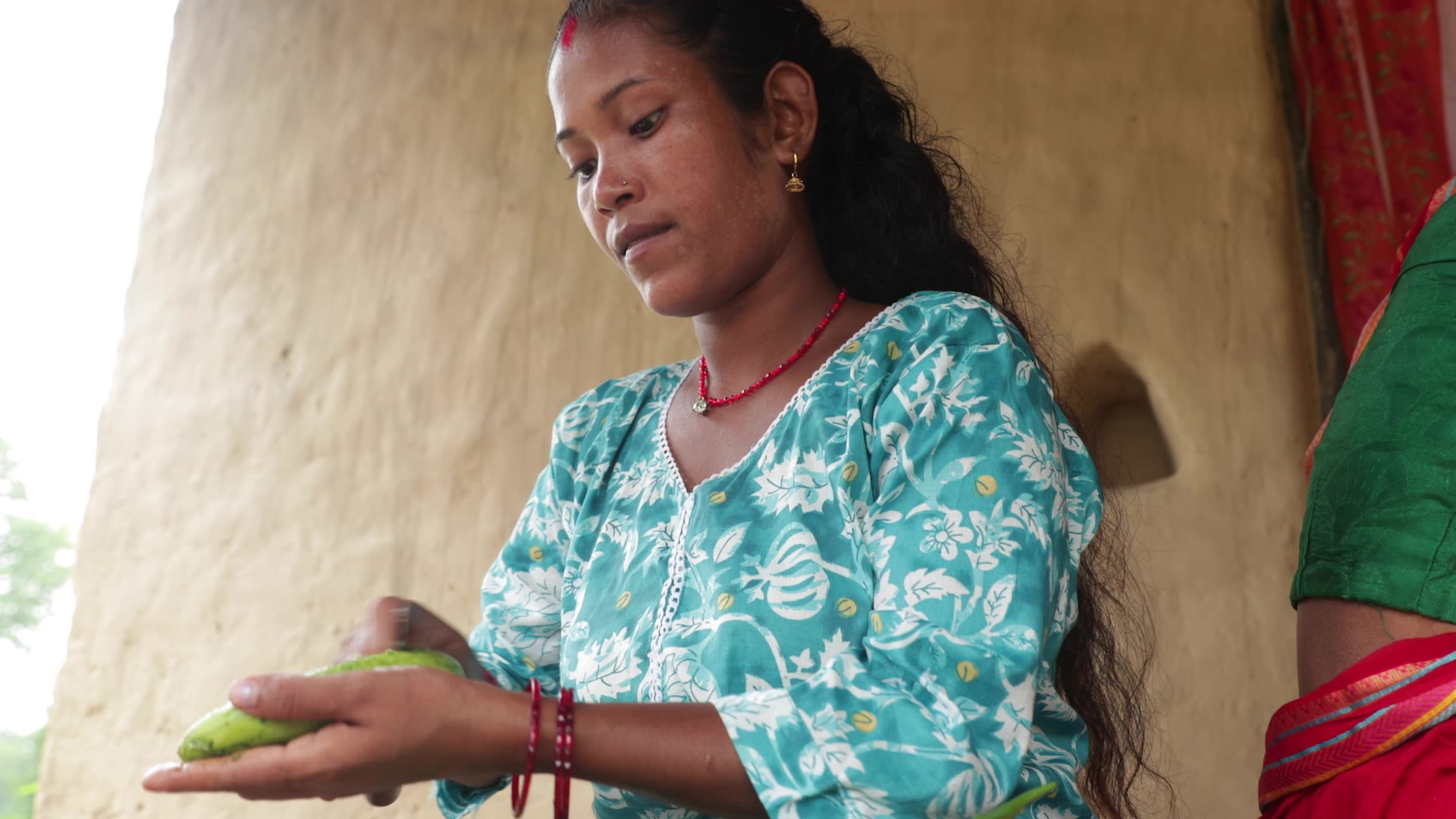
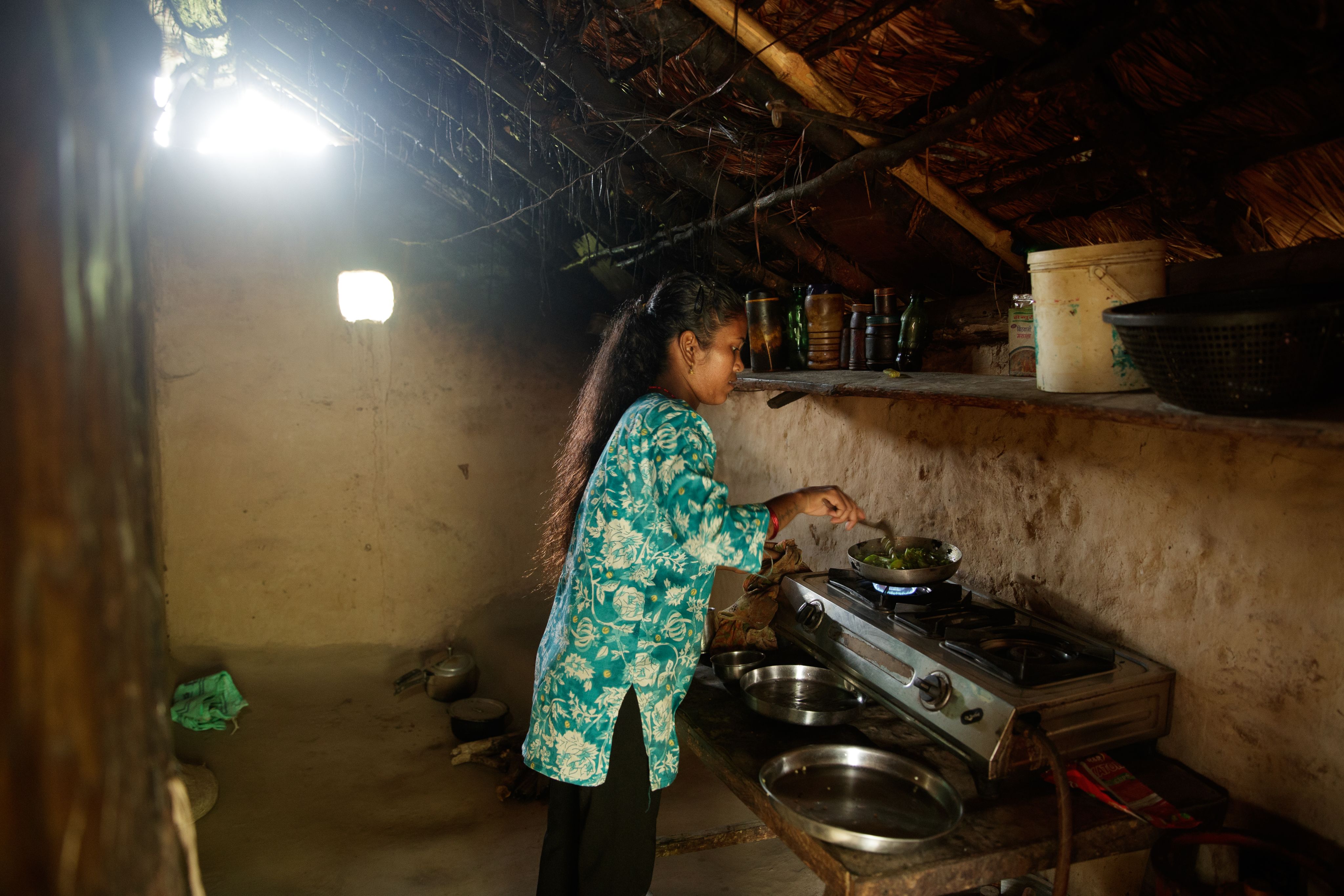
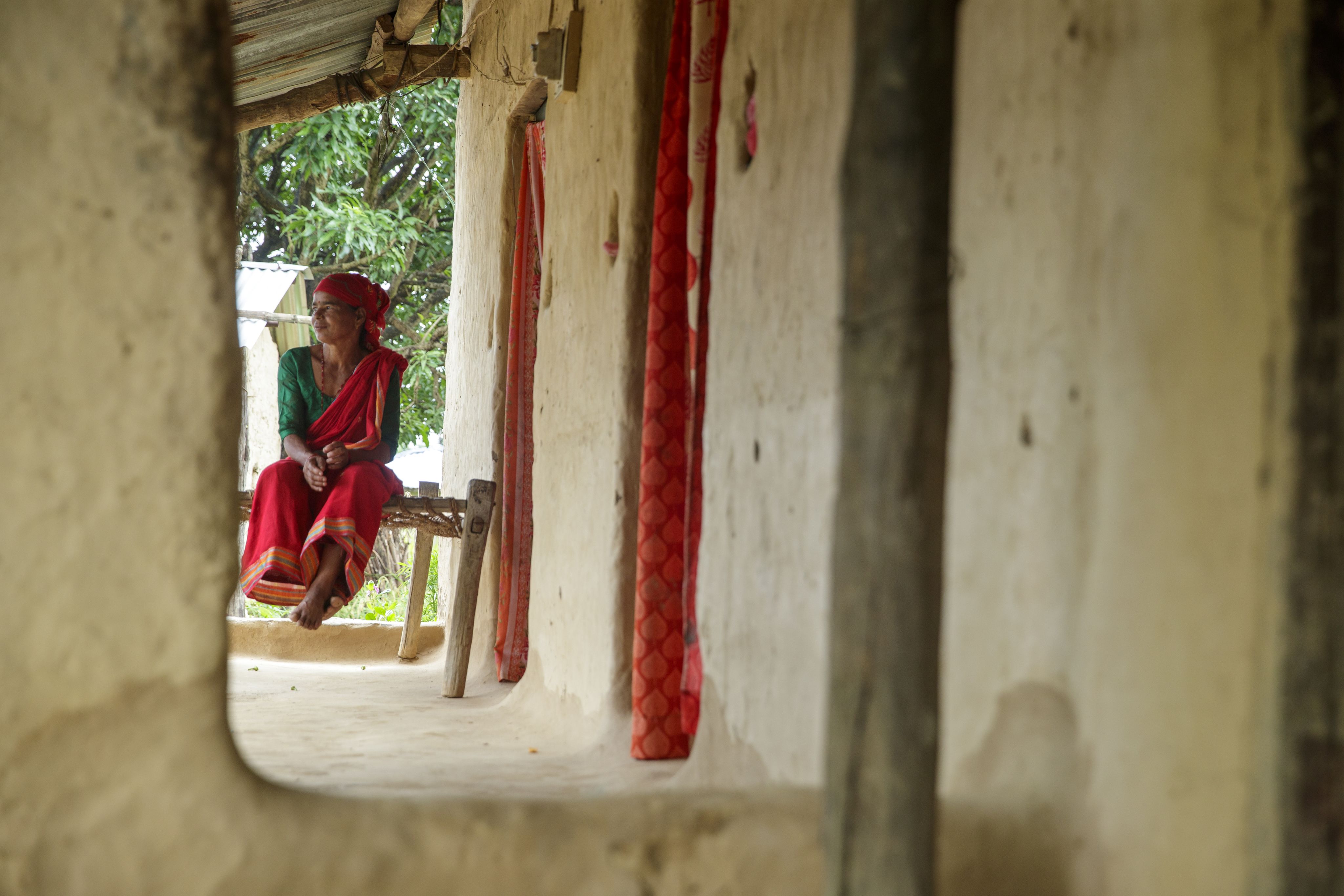
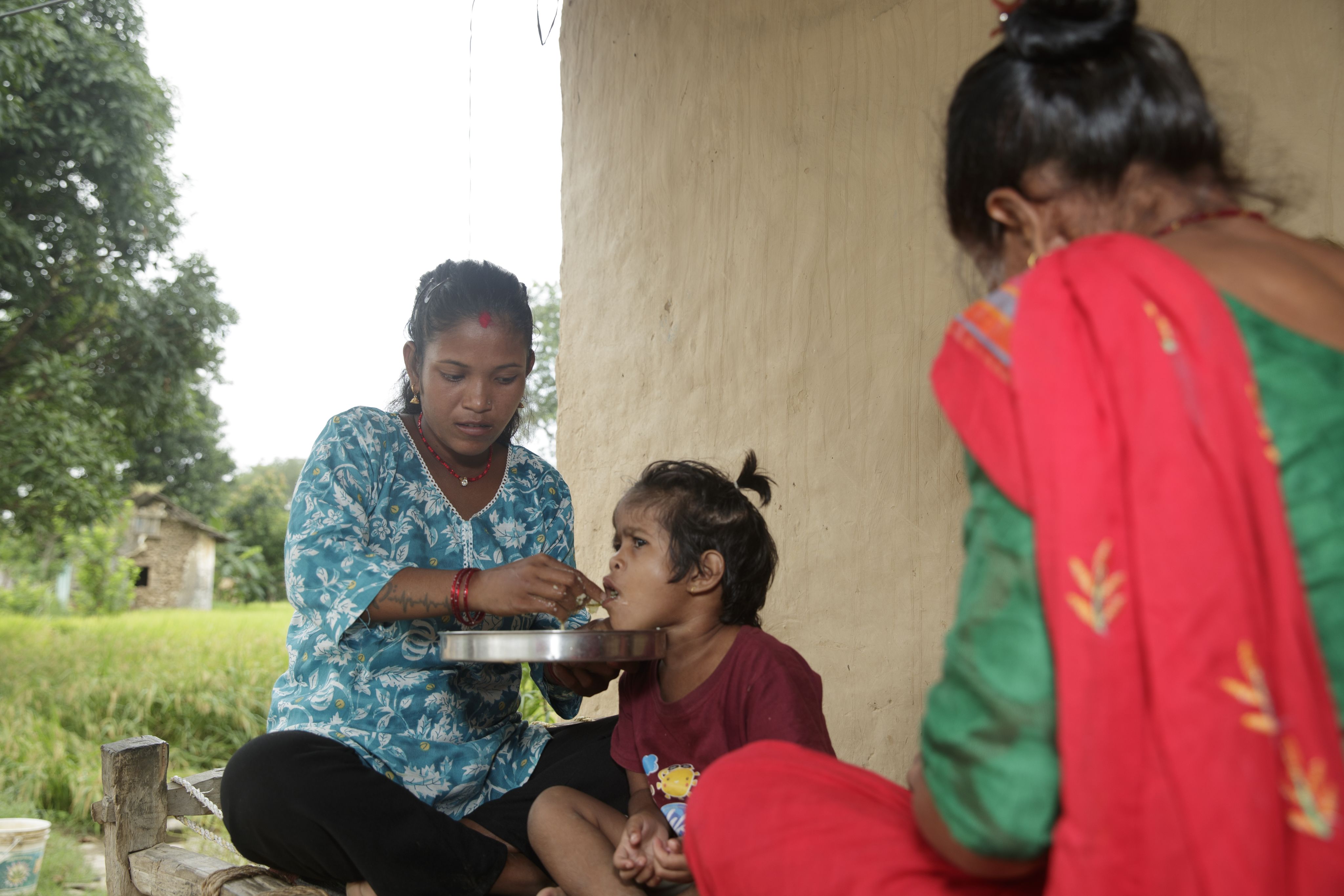
The dangers of micronutrient deficiencies during pregnancy
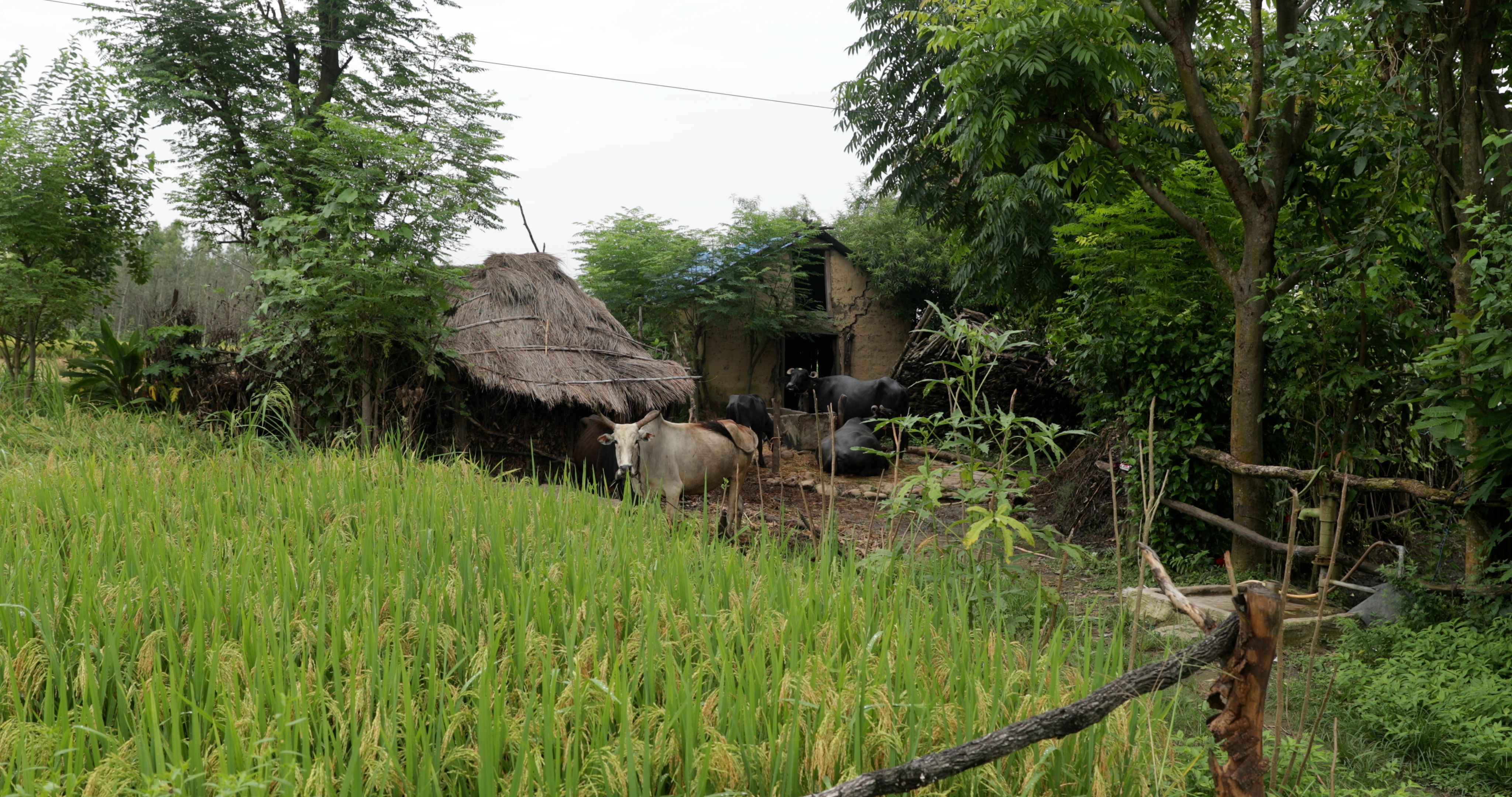
During pregnancy, women face an increased risk of micronutrient deficiencies because of the extra nutritional needs of the developing baby. Undernutrition can result in a range of dangerous complications for both mothers and babies, including anemia — which is linked to a higher risk of postpartum hemorrhaging and maternal mortality — as well as premature births and low birthweight babies. Children born to undernourished women are more likely to be malnourished themselves and can face impaired physical and cognitive development, limiting their potential in adulthood.
It’s the norm for pregnant women in high-income countries to be given prenatal multivitamins that contain a variety of micronutrients to support their nutrition — known as multiple micronutrient supplements, or MMS. However, most women outside of high-income settings, and in Nepal, receive a prenatal vitamin that contains just two micronutrients: iron and folic acid, or IFA. Research has proven MMS to be as effective as IFA in preventing anemia, and more effective at preventing babies from being born too small or, tragically, stillborn.
Forms of undernutrition
Anemia
A condition in which the number of red blood cells, or the hemoglobin concentration within them, is lower than normal. Hemoglobin is needed to carry oxygen and having too few or abnormal red blood cells, or not enough hemoglobin, reduces the blood’s ability to deliver oxygen to tissues. Severe anemia during pregnancy can increase the risk of maternal mortality. The most common nutritional cause of anemia is iron deficiency, although deficiencies in folate, vitamins B12, and A are also important causes.
Low birth weight
A weight at birth of <2500 grams (5.5 pounds), as defined by WHO. Low birth weight is often linked to maternal malnutrition, ill health, and poor health care during pregnancy. It’s closely associated with neonatal mortality and morbidity, inhibited growth, and poor cognitive development in a child.
Stunting
Stunting is when a child has a low height for their age, most frequently caused by inadequate nutrition and recurrent infections or diseases, which affect nutrient intake, absorption, or utilization. Stunted children fall sick more often, miss opportunities to learn, perform less well in school, and are more likely to grow up to be economically disadvantaged.
Wasting
Wasting is defined as low weight-for-height and is the result of recent rapid weight loss or the failure to gain weight. Wasted children are often frail and may appear thin, with weakened immune systems, leaving them more vulnerable to infections and diseases.

“MMS leads to better pregnancy outcomes and healthier babies, and these babies then go on to achieve their full growth potential. Hence, it can also impact countries’ growth and productivity,” said Dr. Sufia Askari, managing director at nutrition research NGO Sight and Life. “So you can see this is an equity issue, not just at the level of the mother, but also at the level of countries.”
Nepal has made significant progress in addressing the burden of maternal anemia, which in the late 1990s was estimated to afflict an estimated 75% of pregnant women and is now down to 34% nationally. The country’s iron intensification program, launched in 2003, distributes IFA tablets to pregnant women through health facilities and a network of female community health volunteers.
According to the most recent demographic survey, 96% of women received supplements containing iron during their most recent pregnancy. Yet over the past 15 years, the prevalence of babies born with low birth weight has stagnated at approximately 12%, suggesting that other factors might be holding back progress.
Addressing undernutrition in pregnancy in the plains of Nepal
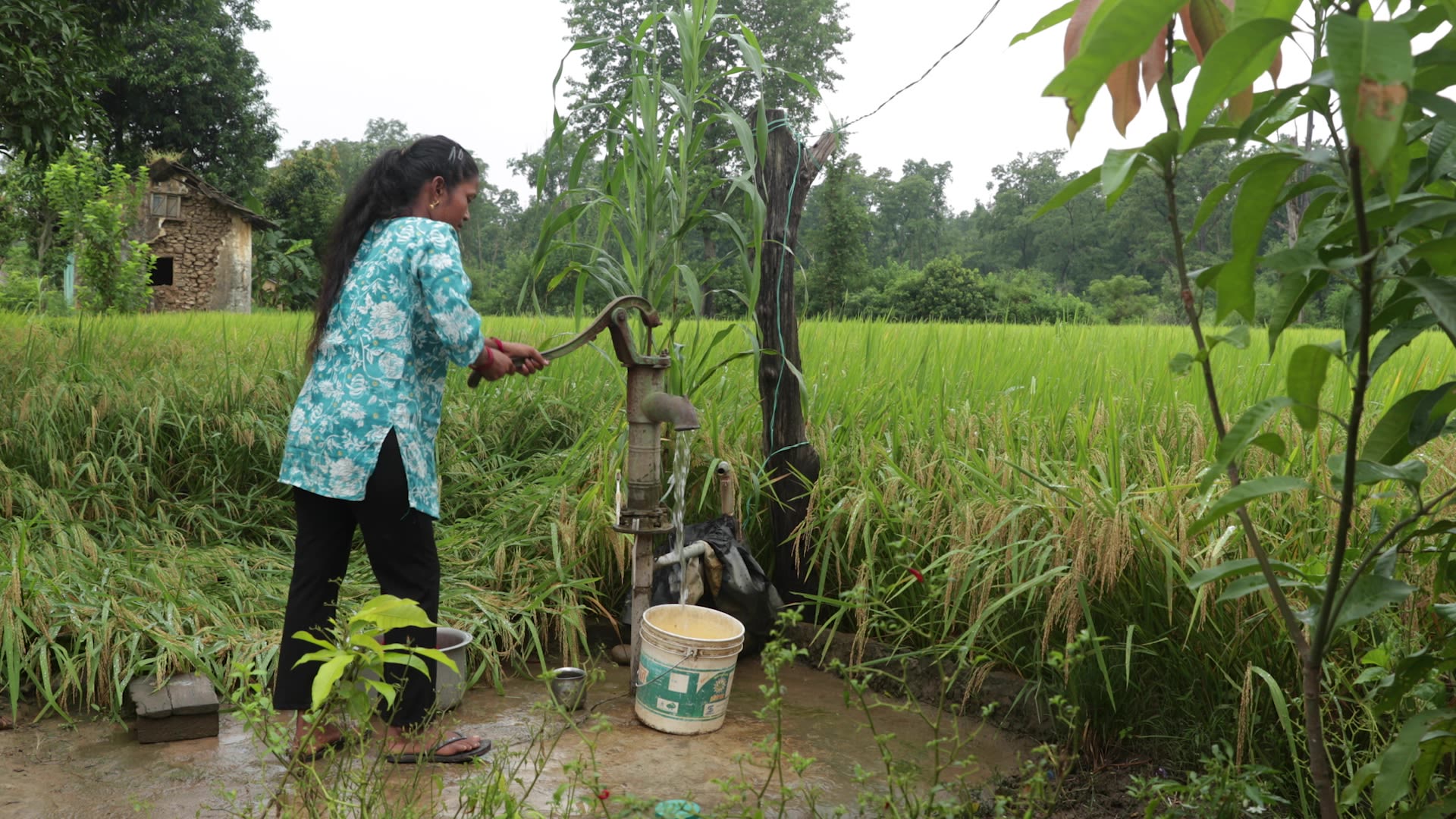
Despite being the part of the country with the most fertile and productive land, the Terai region lags behind the other parts of Nepal on several health indicators. Lumbini province has the highest rates of maternal mortality, as well as higher than average incidences of maternal anemia, low birthweight babies, wasting, and stunting among children under 5.
Bishnu Shrestha, a public health nurse inspector in Banke district, highlights the primary barriers to good nutrition she sees within the community.
At the root of the issue is a lack of awareness and education about the need for good nutrition during pregnancy, said Bishnu Shrestha, public health nurse inspector in Banke, the district where Rokaya lives. “In the villages, they are still not aware that pregnant women and new mothers need nutritious food, [and this] causes barriers to their health,” she said.
A map showing the different geographical zones of Nepal with Lumbini province highlighted.
A map showing the different geographical zones of Nepal with Lumbini province highlighted.
Financial constraints coupled with certain beliefs, including that a smaller baby will result in an easier delivery, can lead to pregnant women eating less than they need. “They worry that if the baby is bigger, they will not be able to have a normal delivery at a health facility and will have to come to hospital for an operation. If the hospital stay is extended, who will take care of their households? This is one aspect,” Shrestha said.
The government of Nepal is currently conducting research, in collaboration with nutrition NGO Helen Keller Intl, into the feasibility of providing all pregnant women with MMS instead of IFA. A trial is underway in Lumbini province to gauge the acceptability and adherence to MMS among a sample of pregnant women — including Rokaya — who are now taking the supplement on a daily basis throughout their pregnancies.
Strengthening health services for better maternal care
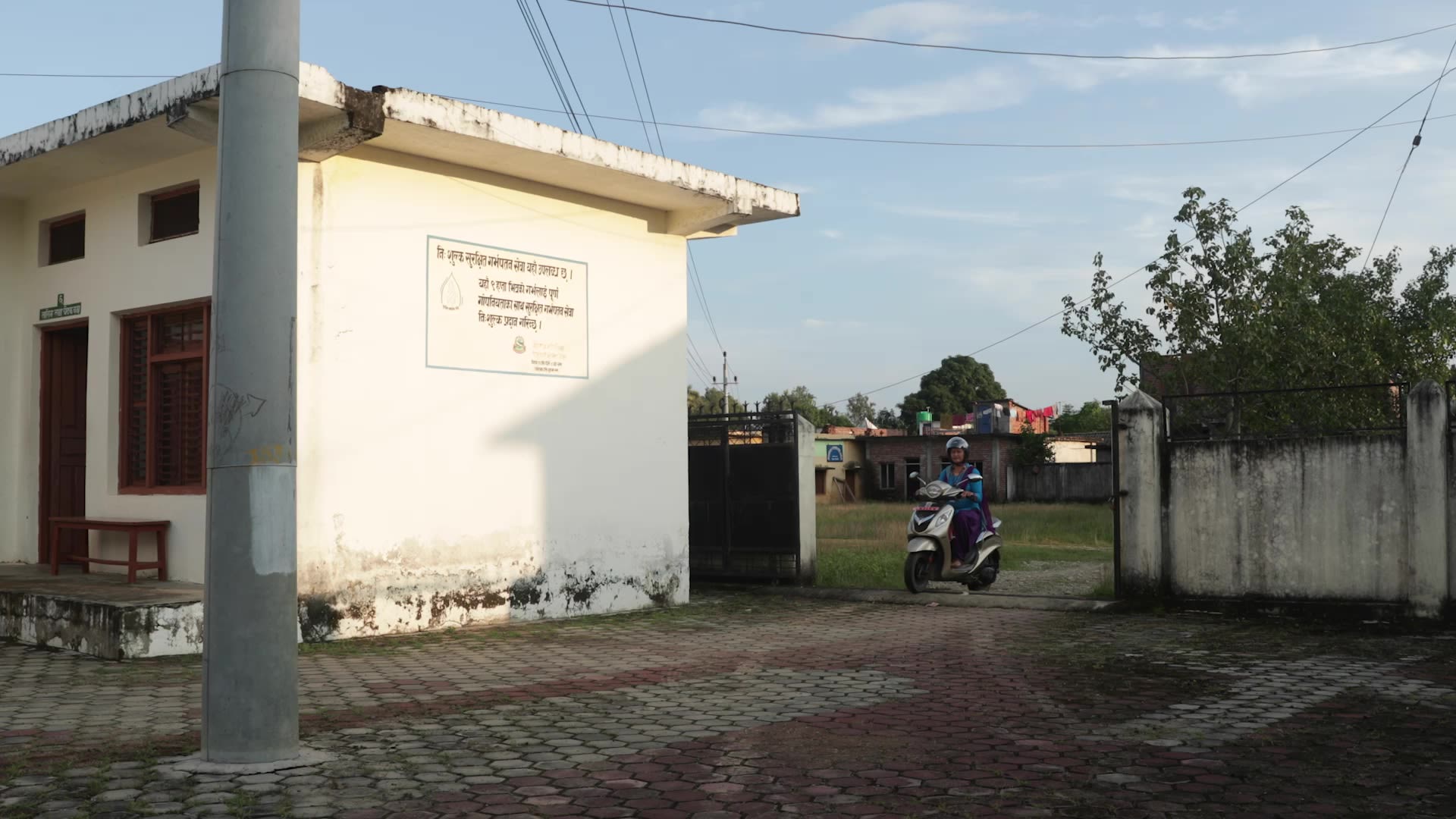
About 8 km from Rokaya’s house is Chisapani health post. The smallest unit in the Nepali public health system, health posts are the first point of care for many, especially in rural areas. Each year, the health post serves around 160 pregnant women, and about 75 babies are delivered there.
The Ministry of Health and Population has recently begun recommending eight antenatal visits during pregnancy to allow for more precise monitoring and counseling on a woman’s health and nutrition. The actual number of visits that women attend is often lower, said senior antenatal care provider Shanti Kumari Nepali. Among the roughly 20 pregnant women she sees in a month, typically about three are underweight and have anemia. Anemic women are given an additional daily dose of iron on top of the standard dose of IFA, or MMS, in the case of research participants.
Kumari Nepali discusses the challenges she sees among the pregnant women she serves.
During her 17 years as an antenatal care provider, Kumari Nepali has seen a decline in the rates of wasting and malnutrition among newborns, thanks in large part to the nutritional counseling provided to expectant mothers. “We tell them to have a glass of warm milk in the morning, include green vegetables in their meals, and have at least two to three kinds of seasonal fruits every day,” she said. However, not all families can afford such a varied diet, she added, which poses one of the biggest challenges to maternal nutrition.
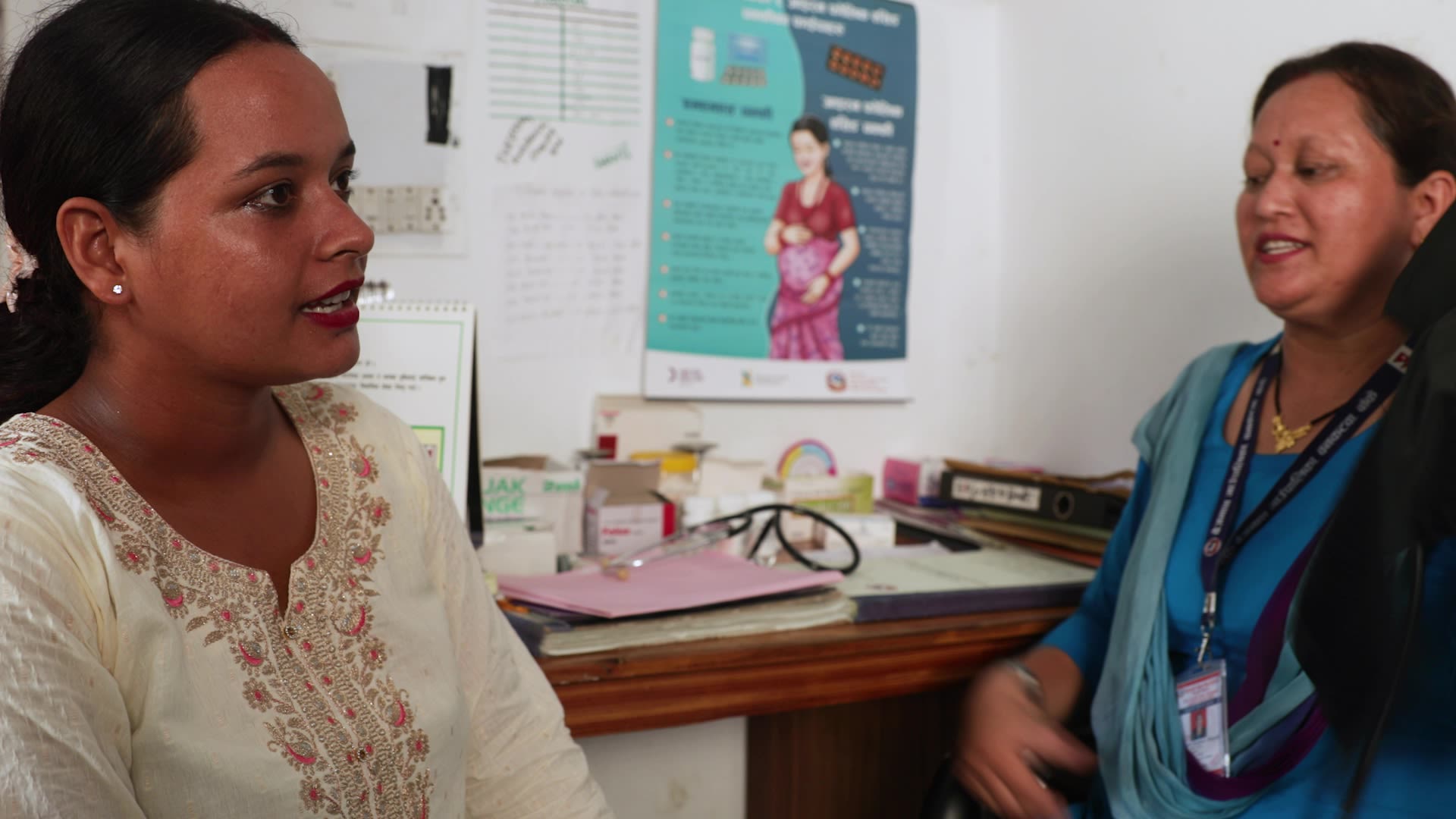
Manisha Bogati, a 24 year-old teacher at a daycare center, is around four months pregnant when she visits the health post for her third antenatal visit. After three years of trying to conceive following a miscarriage, her family was overjoyed when she found out she was pregnant again after taking a home test and confirming the pregnancy at the health post.
During every visit, Bogati has her blood pressure checked, and receives health and nutrition counseling, which has helped her to understand the importance of maintaining a daily food routine and a varied diet. “Before, I didn’t have the habit of eating several times a day. I would skip breakfast in the morning,” she said. “I didn’t like milk, yogurt, or fruit. But now, I eat all of these.”
Bogati also receives calcium and MMS tablets, which she first heard about during her initial ANC visit and from her local community health volunteer. With encouragement from her family, she decided to enroll in the research trial. She now takes one MMS tablet every evening before bed.
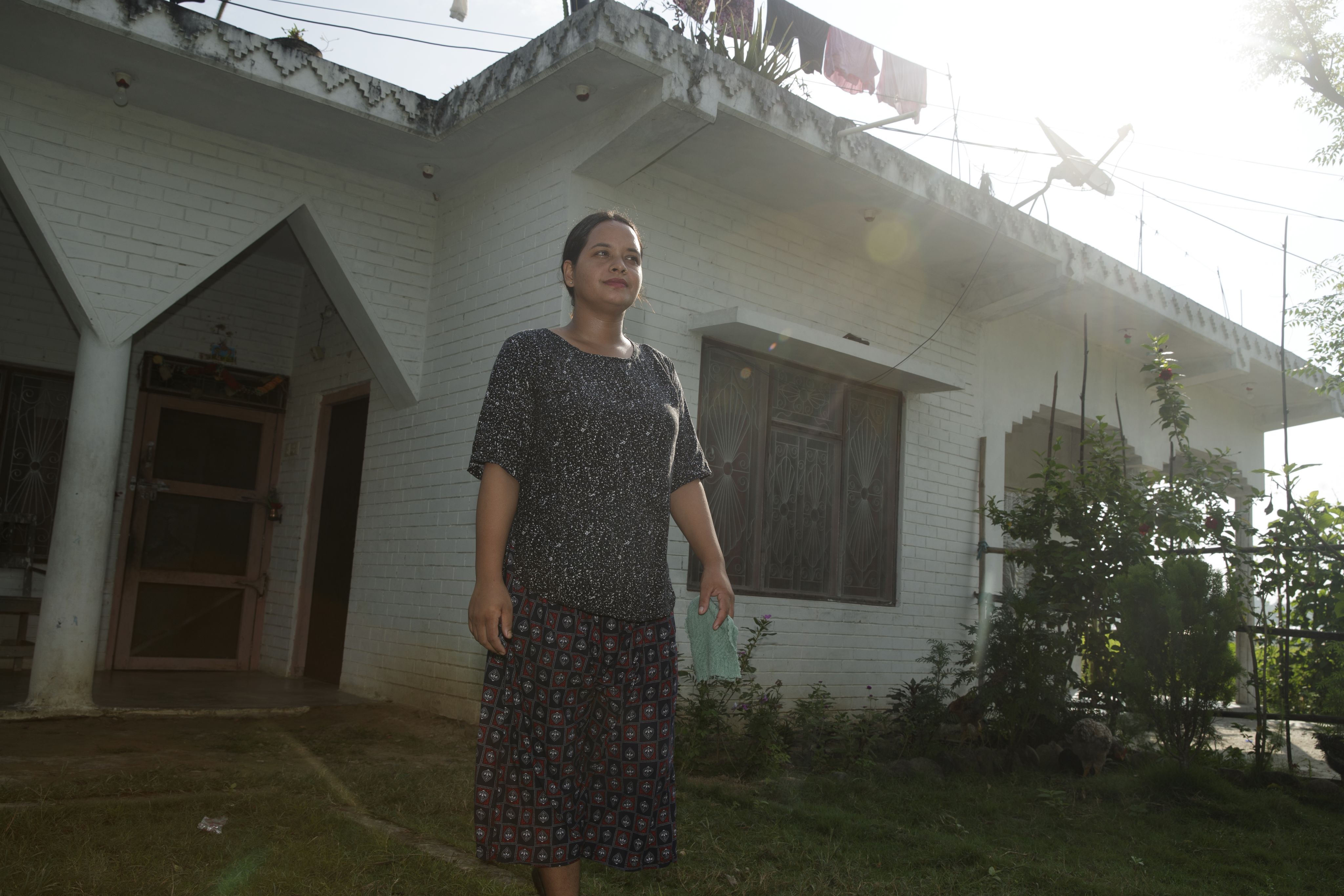
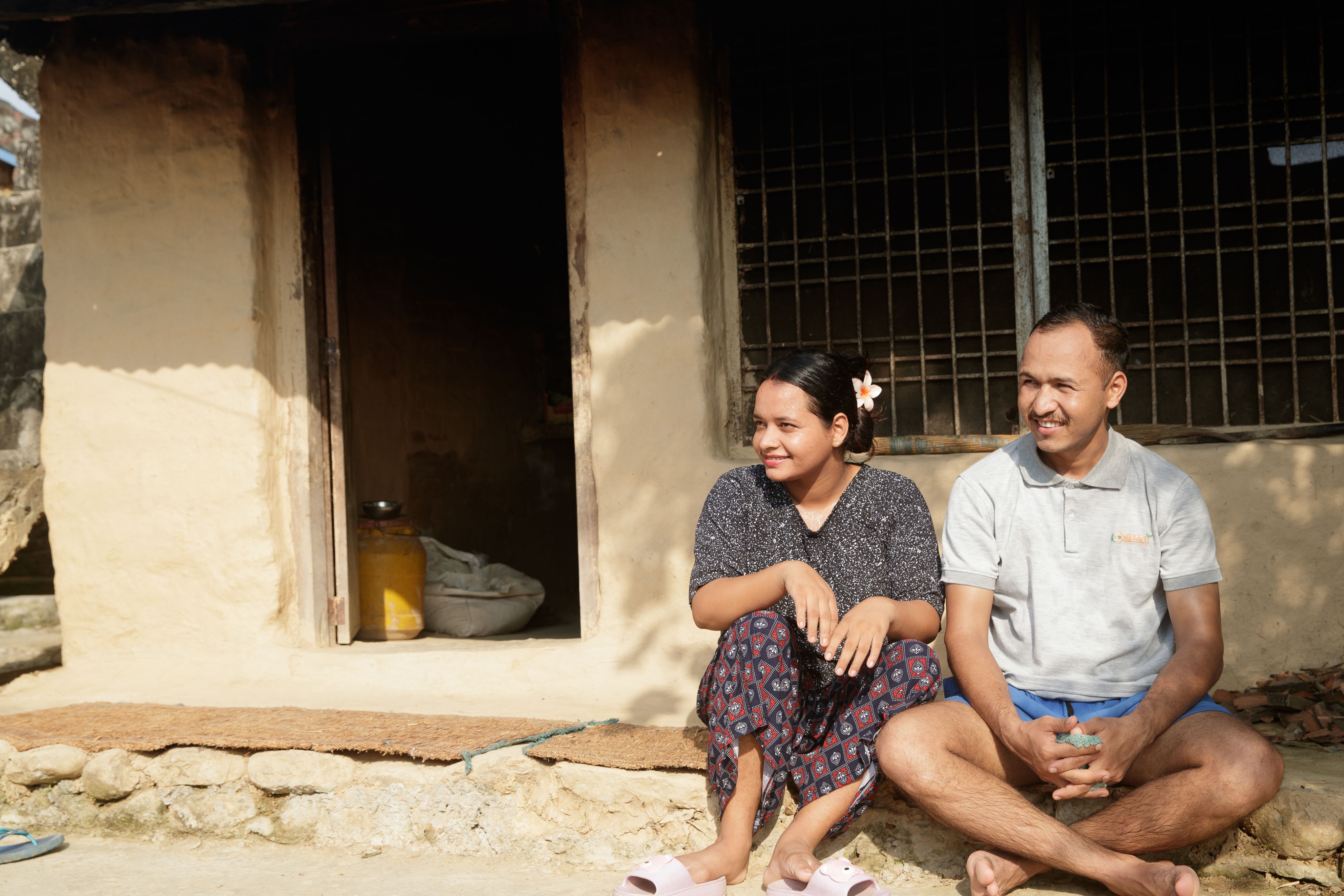
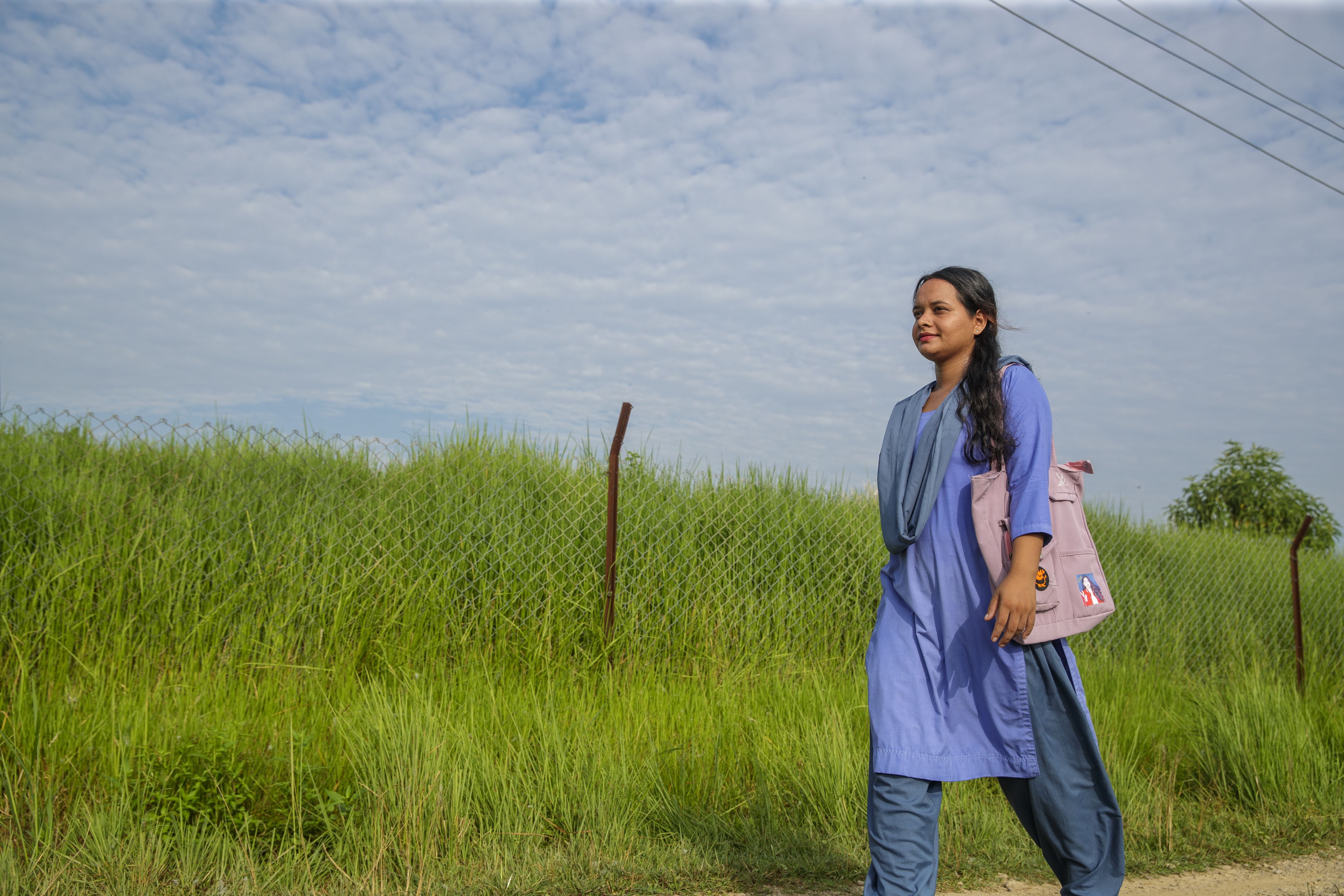
The vital role of female community health volunteers
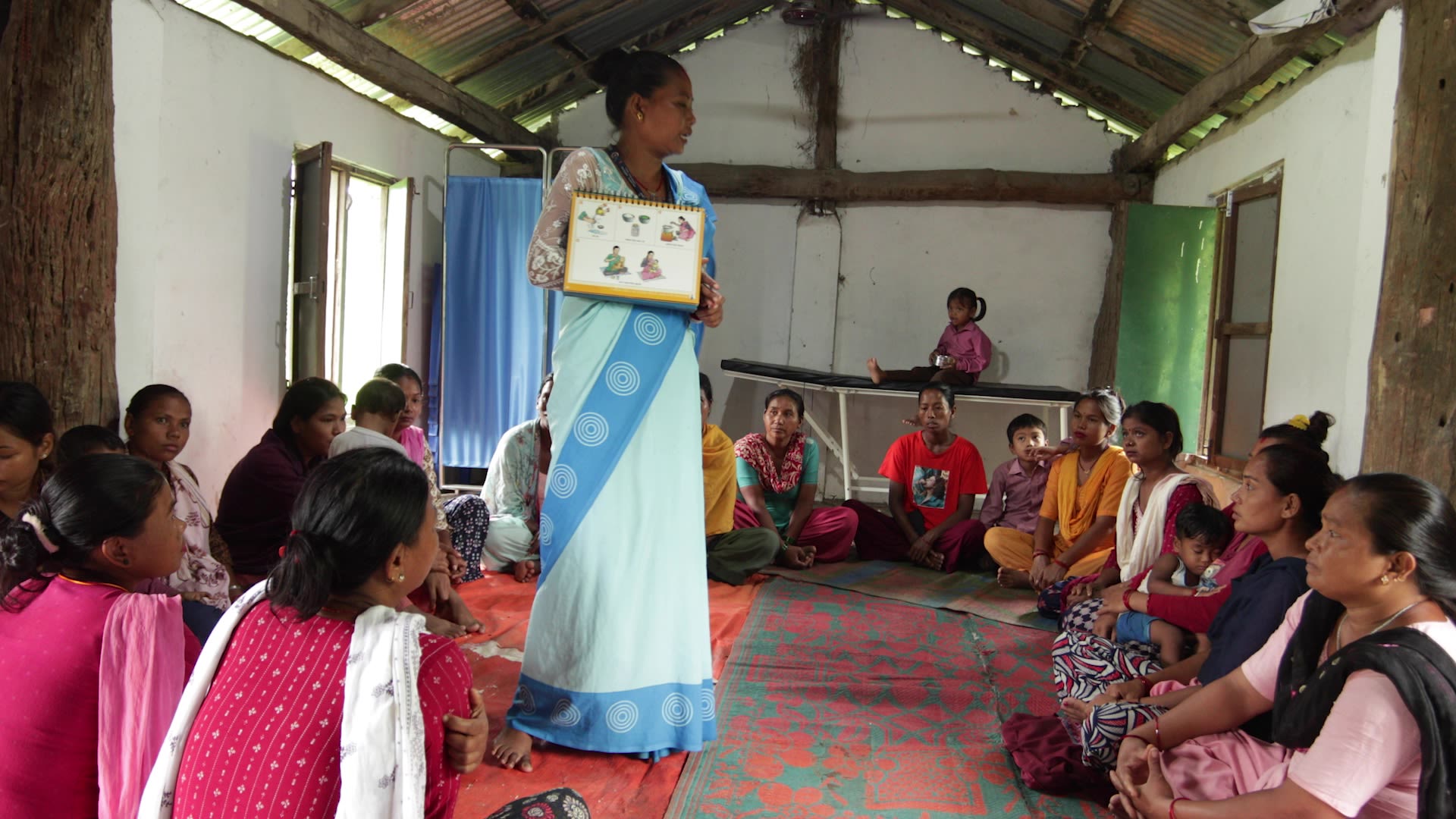
A crucial backbone of the Nepali health system is the network of female community health volunteers that has operated throughout the country since the 1980s and now numbers more than 50,000. Highly respected within their communities, female community health volunteers provide advice and guidance on a range of health issues and deliver services including family planning and vaccinations. They play an important role in identifying pregnant women in their communities at an early stage and ensuring they begin their antenatal checkups, said Kumari Nepali.
About an hour and a half away from Banke by road is Bardiya district, home to one of Nepal’s 12 national parks, and a popular destination for tourists hoping to spot endangered Bengal tigers. Bal Kumari Tharu is a female community health volunteer serving around 120 households in one municipality of Bardiya district, visiting women in their homes or receiving them at her own house. She also organizes a regular meeting for expectant and new mothers, known as the “healthy mothers’ group,” or Aama Samuha, in Nepali.
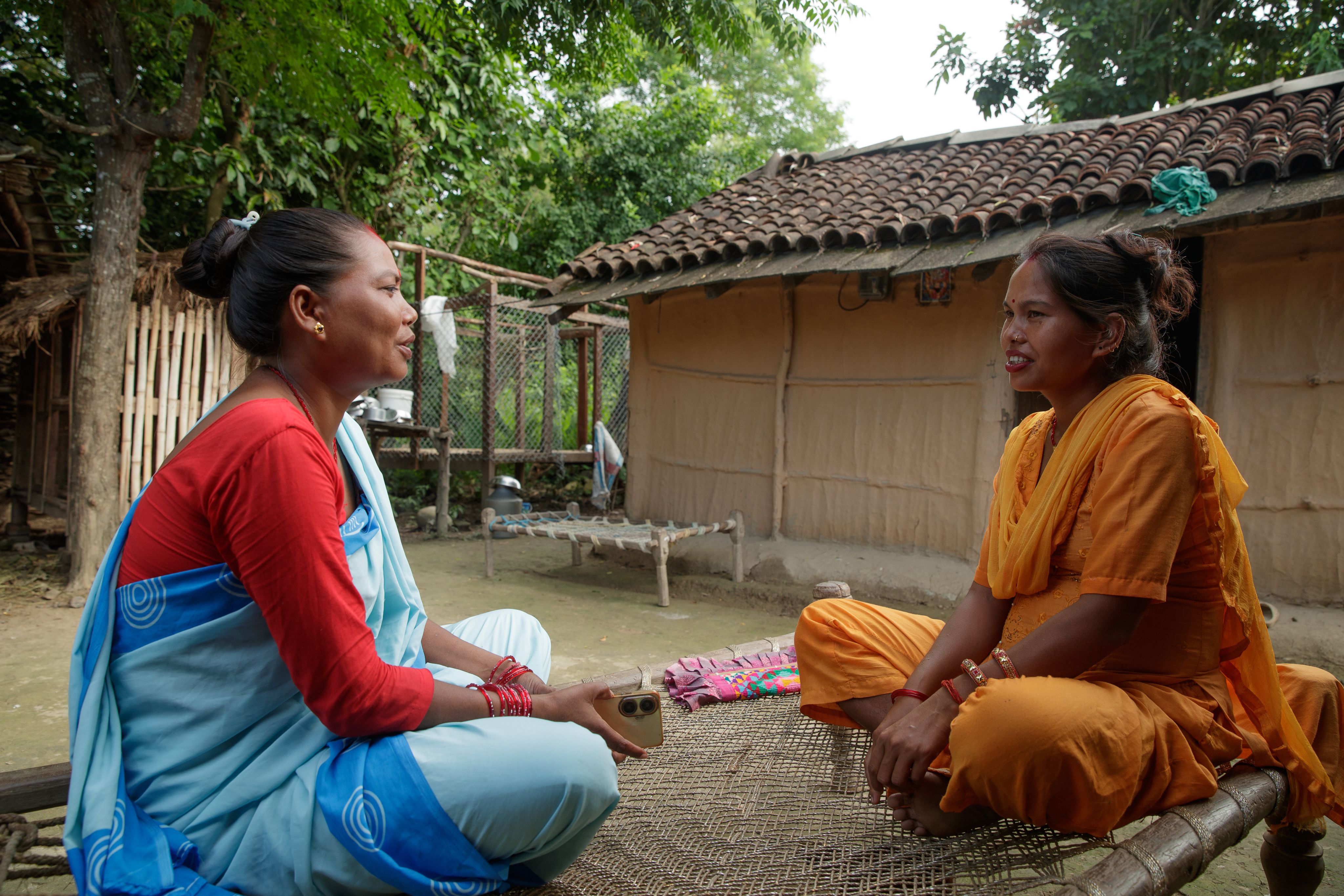
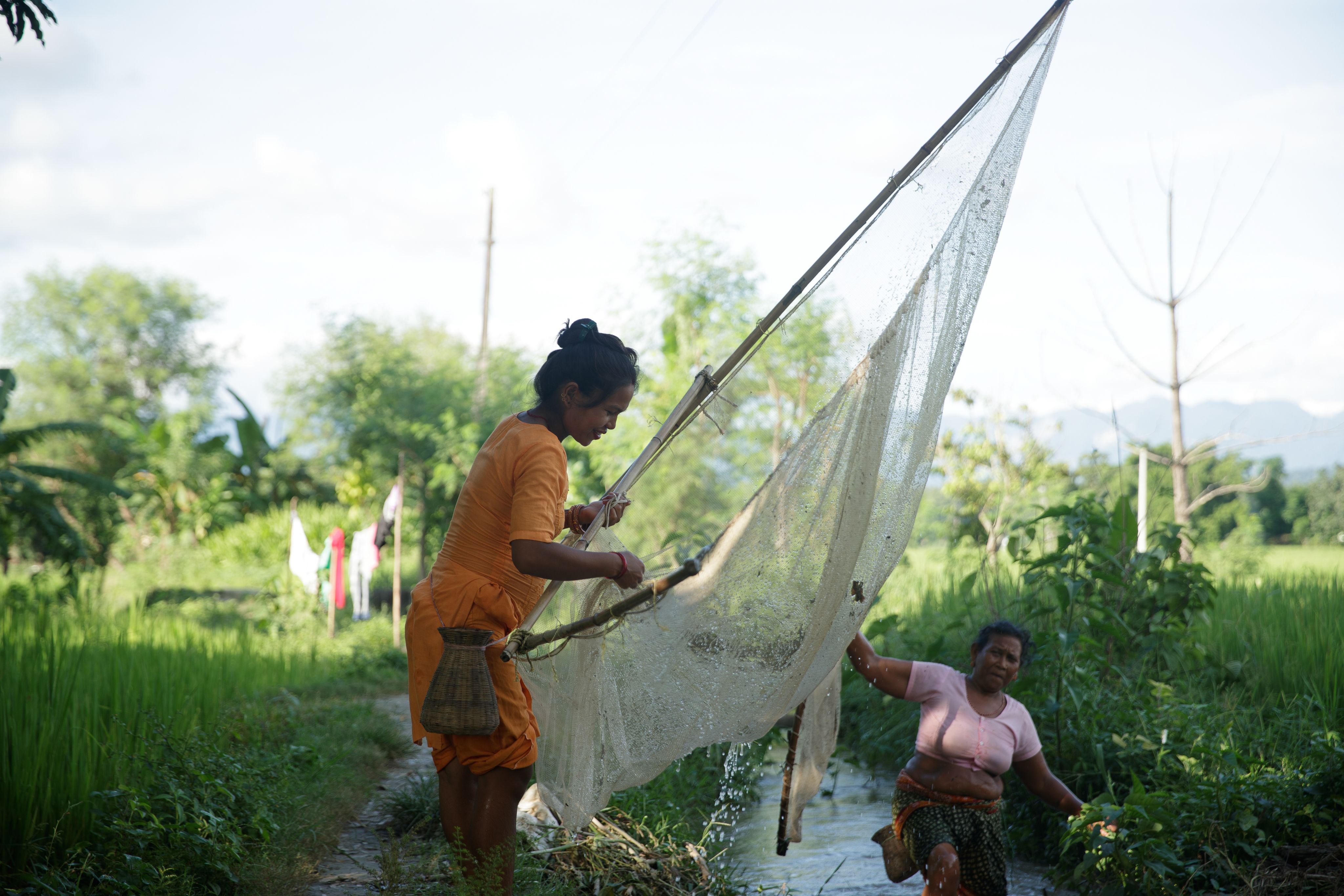
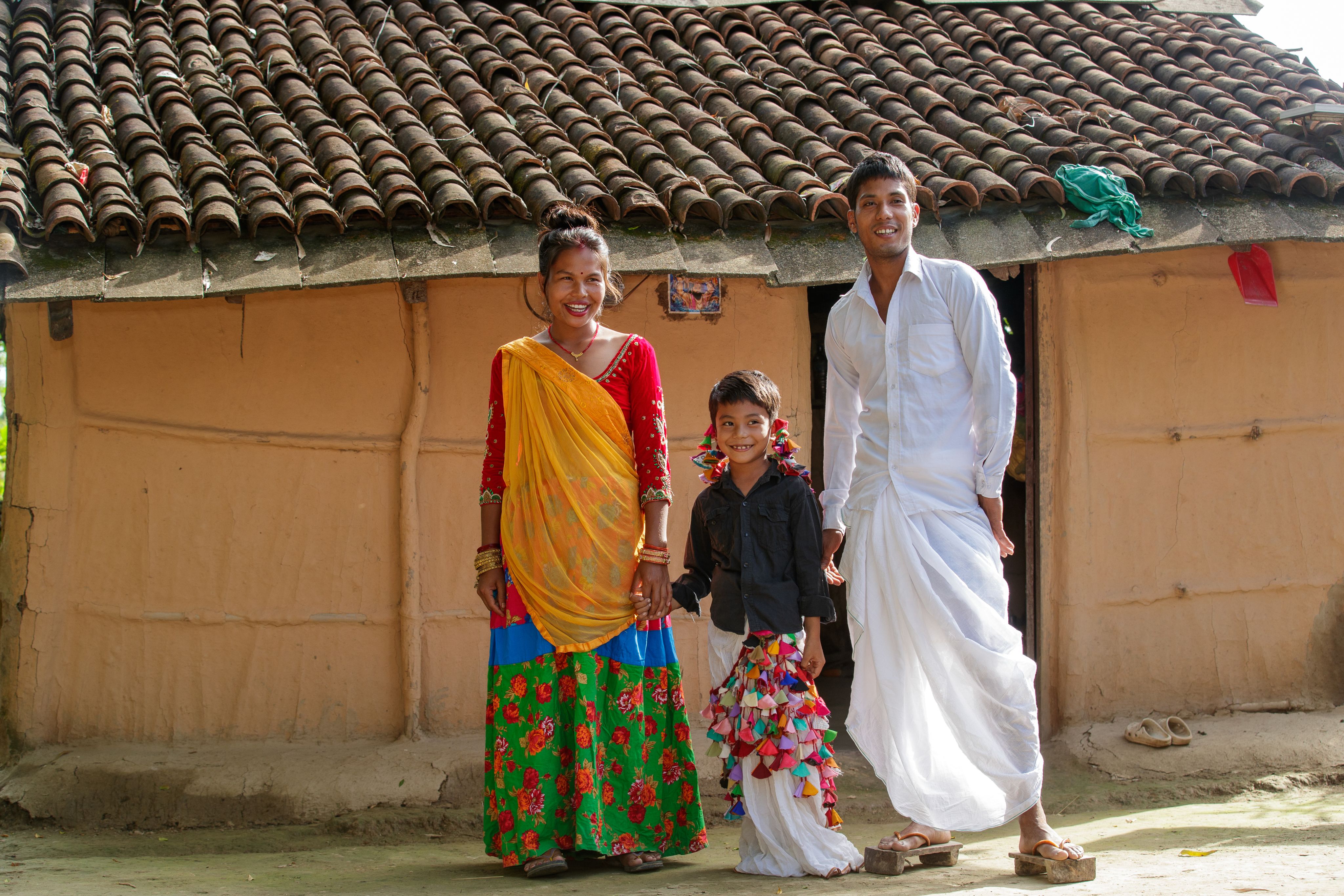
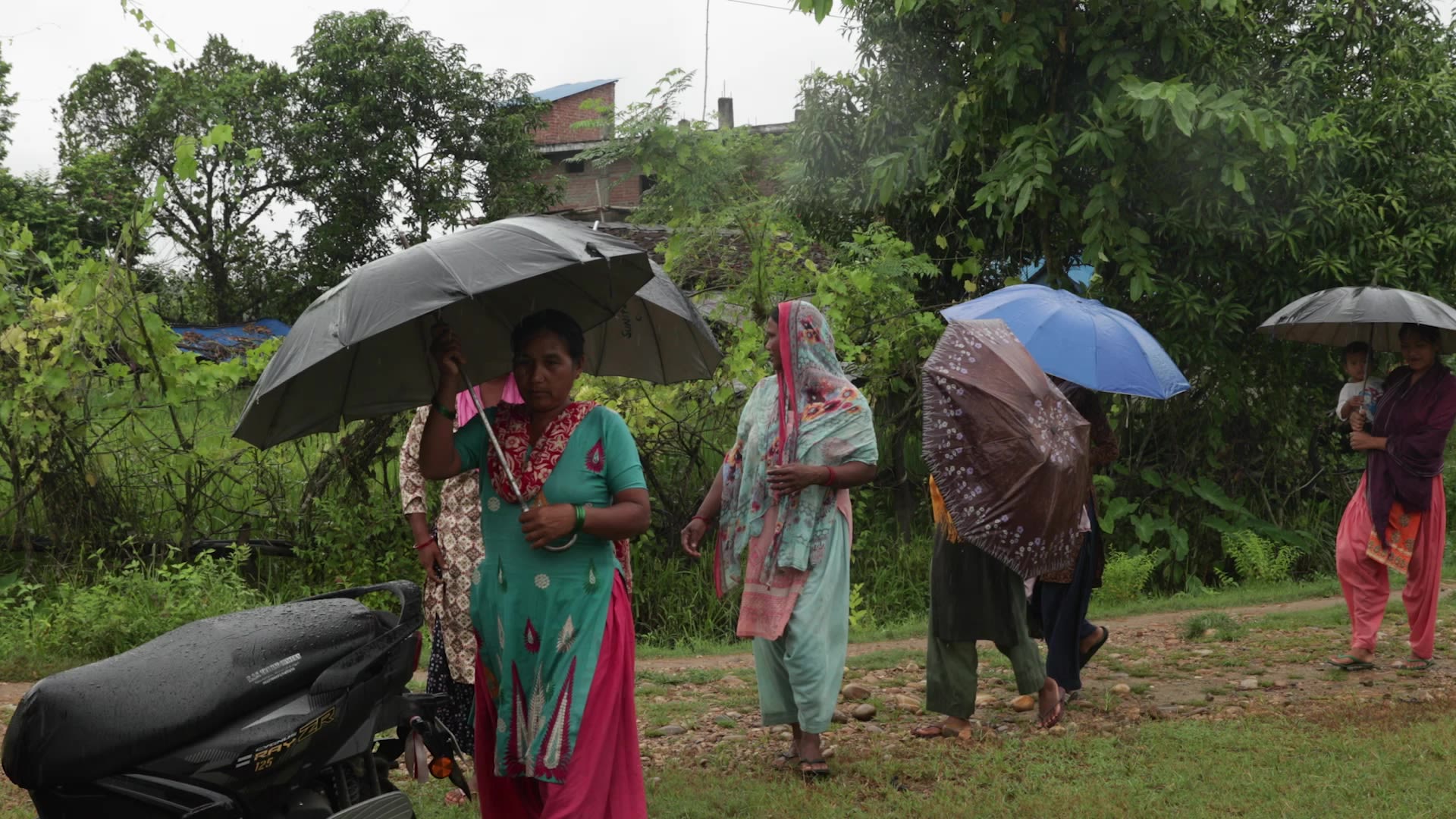
On a rainy morning, around 25 women from the nearby villages gather in a small community building for the monthly meeting. Kumari Tharu, dressed in the light blue sari worn by female community health volunteers, talks about topics such as what to eat during pregnancy, the importance of breastfeeding, and what to feed underweight babies. The women listen attentively, some accompanied by young children or with babies in their laps.
As part of the MMS research, Kumari Tharu attended a one-day training where she learned about MMS and best practices for counseling women on the benefits of taking nutritional supplements during pregnancy — knowledge she now shares with the group. “When I teach people about how to prepare nutritious food, how to take care of newborn babies, and how to maintain hygiene, I feel happy,” Kumari Tharu said.
Kumari Tharu, dressed in the light blue sari worn by female community health volunteers.
Kumari Tharu, dressed in the light blue sari worn by female community health volunteers.
The meeting covers topics such as what to eat during pregnancy, the importance of breastfeeding, and what to feed underweight babies.
The meeting covers topics such as what to eat during pregnancy, the importance of breastfeeding, and what to feed underweight babies.
During the sessions, Kumari Tharu also shares information about prenatal vitamins.
During the sessions, Kumari Tharu also shares information about prenatal vitamins.
Creating an evidence-based framework for shifting to MMS
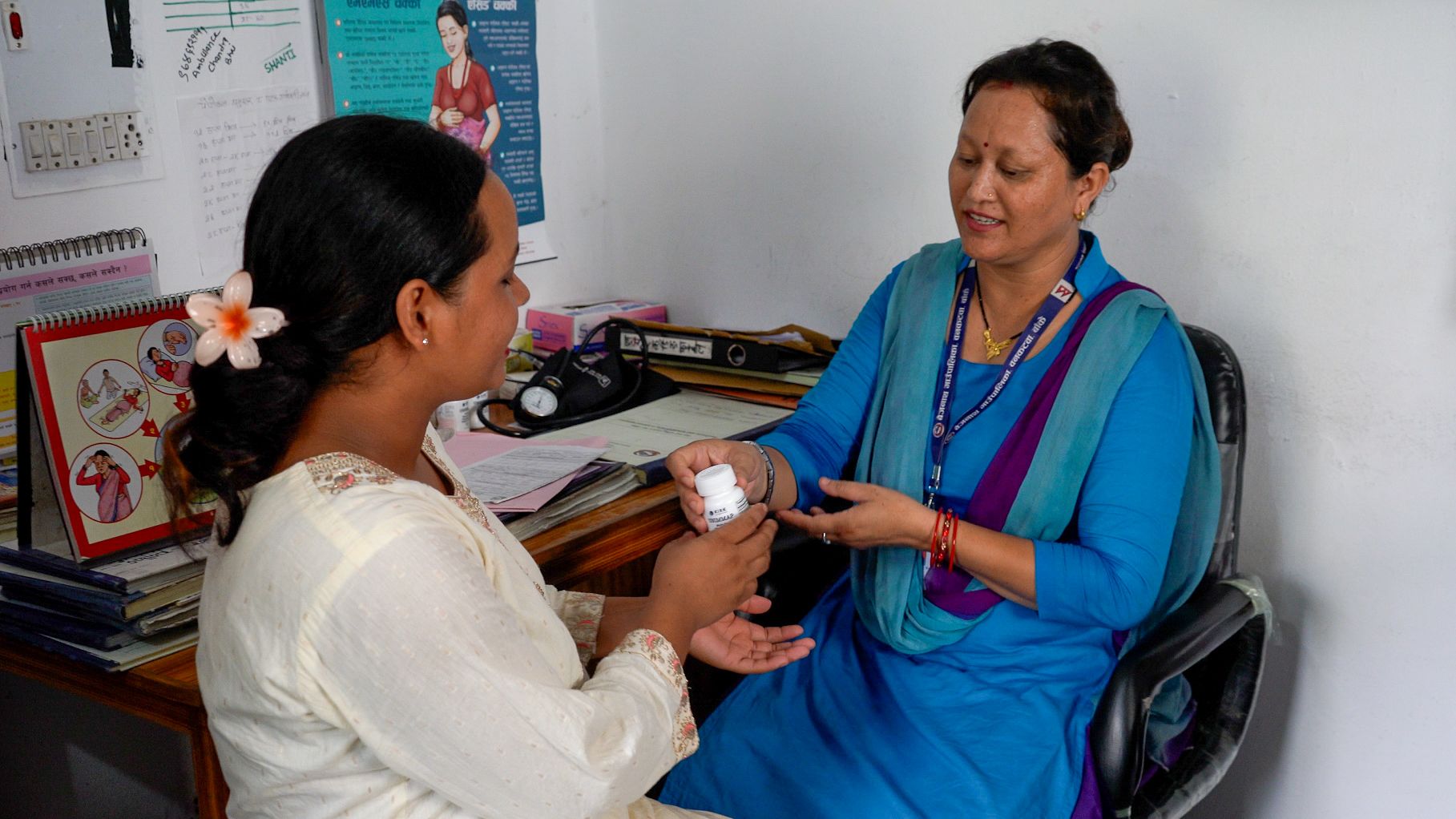
If the trial meets the expectations of Nepal’s Ministry of Health and Population, the shift to MMS could mark a significant advancement in how Nepal tackles the persistent issue of undernutrition in pregnancy. Nepal is far from alone in considering a switch to MMS from IFA. More than 25 countries are actively working to introduce MMS in their health systems, including Indonesia, which just announced a national MMS scaleup.
Bringing MMS to pregnant women in countries such as Nepal will require additional investment, including for procurement and strengthening maternal health care. “We have to improve antenatal care services so that they can provide MMS, but also essential health care, which is required for the pregnant woman,” Askari said. One estimate suggests that $1 billion is needed over the next six years to bring MMS to pregnant women in more than 40 countries, including investment by donors and national governments. If achieved, it is estimated that more than 600,000 lives could be saved.
At Chisapani health post, Kumari Nepali reflects on her role in supporting healthy pregnancies and safe deliveries. “It gives me satisfaction when, due to my counseling, a woman followed my advice, adopted healthy behaviors, had a safe delivery, and gave birth to a healthy baby,” she said. “I feel very happy. I feel like this is a plant I sowed and took care of, which is fruiting now.”

Credits
Producer and reporter: Naomi Mihara
Photography and videography: Gorakh Bista
Translation: Shijan Acharya
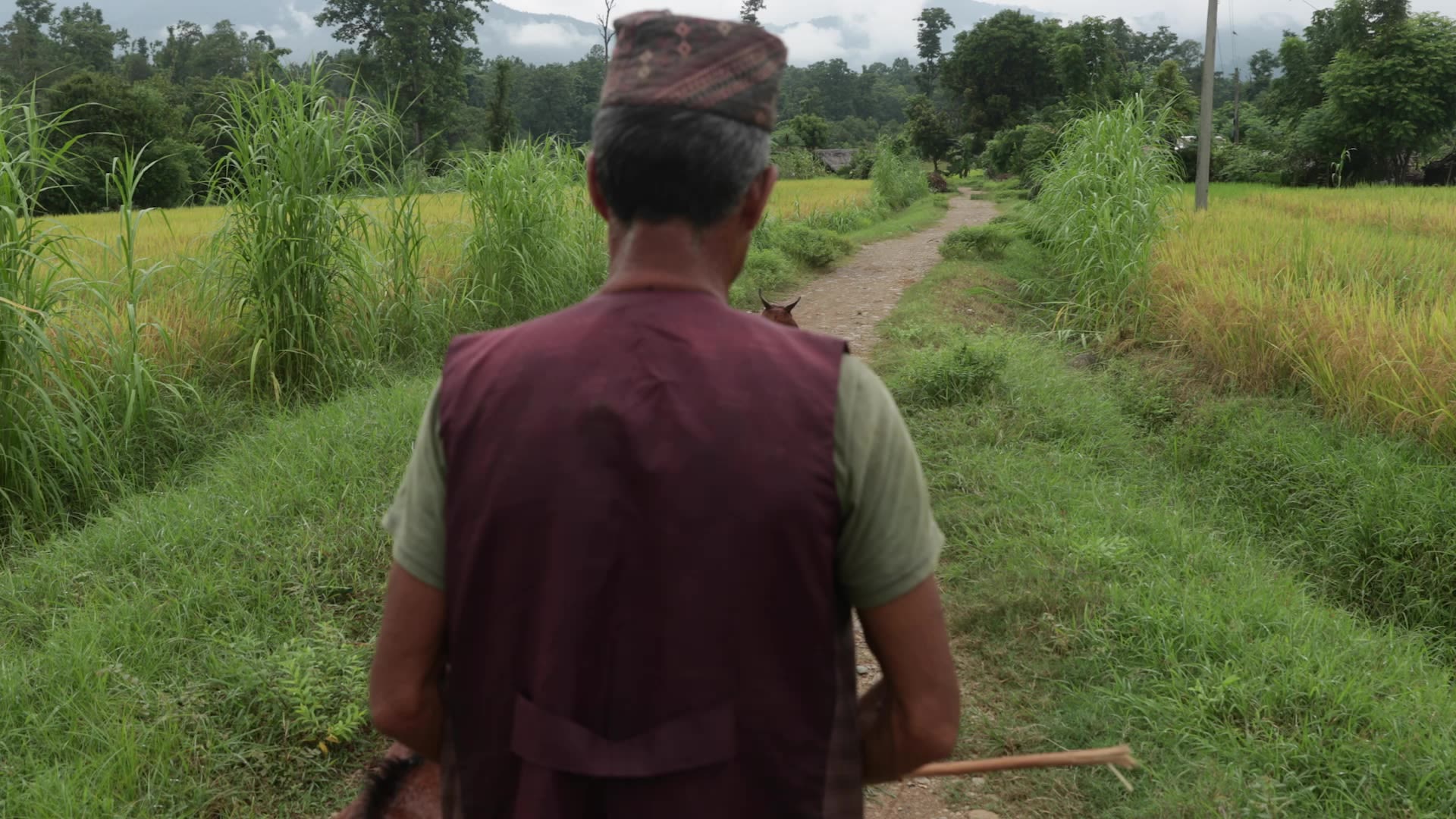
SPONSORED BY

